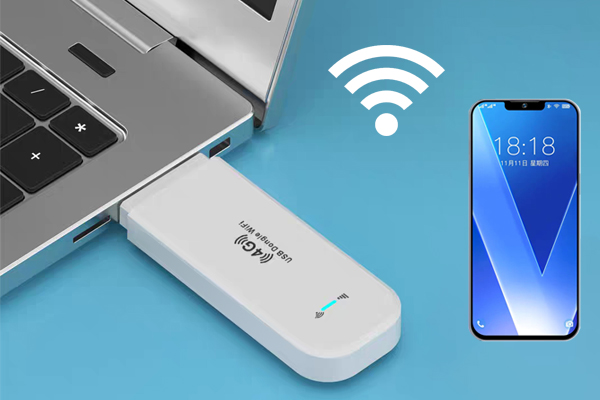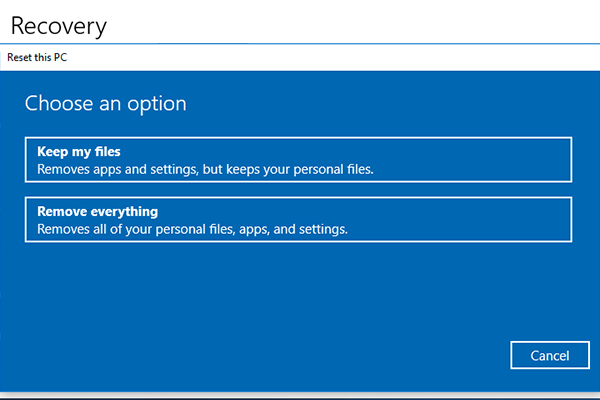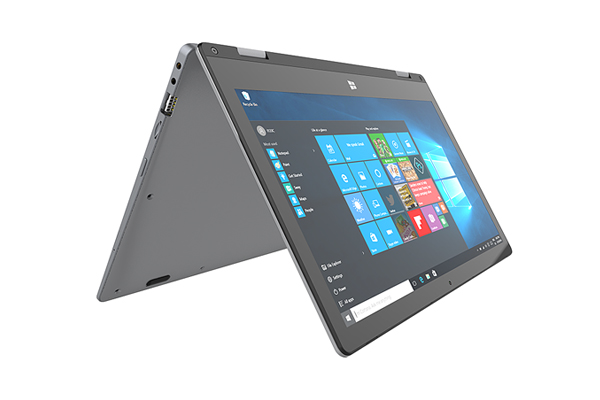- Have any questions?
- +86 19122692420
- info@aiwa-group.com

How to rotate screen on the laptop computer?
April 12, 2022
AIWO Labtop White/Black I7-11800h RTX 3060 144hz Laptop with 32gb Ram
April 14, 20221.How to connect ethernet cable to laptop?
what to know
- If your laptop PC has an ethernet port, plug in an ethernet cable.
- You can also use adapters and ports to expand port options, including Ethernet.
- Docking stations can provide more permanent port options in specific locations.
This guide will explain how to connect an ethernet cable to a laptop, whether it has the correct port or not.
How to connect ethernet to laptop?
Setting up ethernet connection is very easy.If your laptop has an ethernet port, all you need to do is plug an ethernet cable into that port and hock up it to the router on the other end.The ethernet interface looks like this;

You may need to disable Wi-Fi or tell your laptop to prioritize the Ethernet connection to get the most out of it, but set up is simple.
If you don't have an Ethernet port on your laptop, then you'll need to use an accessory to give you that functionality. Some adapters can convert USB-A and USB-C ports to Ethernet connections, which can use different bandwidths depending on the generation of the USB port.With these converters, you can also connect Ethernet to laptops which without an Ethernet interface.

For a more comprehensive range of port options, you can use the multi-port adapter that comes with your Ethernet connection - make sure you buy an adapter with the ports you need. Most of these are simple plug-and-play affairs that don't require installing any extra drivers that Windows or macOS can't find, but double-check compatibility with your laptop and operating system before buying.
For the most powerful but location-specific expansion of your laptop's ports, you can use a docking station. They are usually powered by a mains connection, can have more ports, and even charge laptops through them. They work on Windows laptops and MacBooks, so no matter what laptop you have, you'll find a docking station that can be used with your laptop.
Can I connect an ethernet cable to my laptop?
Almost certainly, yes. However, you may not be able to do this with native port selection. If you have an ethernet port, you can plug it in - check the ethernet RJ45 port on the side of the laptop, or look at the manufacturer's official specs.
If you don't have an ethernet port, that's okay; you can buy an adapter or dock and use that instead.
How do I get my laptop to recognize my ethernet cable?
Your laptop should recognize the ethernet cable as soon as you plug it in, but make sure you've plugged the other end into the router or it won't connect.
If you still find that your laptop is relying on its Wi-Fi connection, consider disabling Wi-Fi temporarily to make your laptop prioritize the Ethernet connection.
Do all laptops have ethernet ports?
No. Even though Ethernet is more common on laptops, many smaller designs still don't have Ethernet ports. However, Ethernet ports are rarely seen today. They're too large to fit into the smaller, thinner designs of modern laptops, and current Wi-Fi speeds are sufficient for most needs, so most laptops don't have Ethernet ports.
common problem
How to connect an ethernet cable to a wireless router?
In addition to the ports that connect the router to the modem (if they are separate devices), the router has multiple Ethernet ports that can be used to establish a wired connection between the router and compatible devices. The same tips apply if the thing you want to connect to the router doesn't have a port.
How to connect laptop to router without ethernet cable?
If you want a hardwired internet connection between your router and your laptop, an ethernet cable is your only option. However, if you're trying to connect to your router to change network settings, you can do it over Wi-Fi. After connecting the laptop to the local wireless network, open 192.168.192.1 in a web browser.
Once upon a time, when laptops were much bulkier, Ethernet ports were standard. These days, increasingly slim laptop designs eschew Ethernet ports, but that doesn't mean you have to ditch them: Read on as we show you how to get Ethernet in cheap and easy Functionality added to even the thinnest Ultrabook.
While many, if not most, laptops no longer come with Ethernet jacks, it's an easy fix for those of us who still prefer an Ethernet connection. While you can pay for a docking station (they're still in production), the docking station is overkill for your application in both features and price. A premium USB 3.0-based docking station like the pluggable UD-3900 costs $99 and includes the Ethernet port you're looking for (as well as a USB expansion port, audio port, and external monitor port). It's great if you're looking to set yourself up an easy-to-connect workstation with a single cable connecting you to external monitors, hard drives, and peripherals, but it's overkill for a simple ethernet connection fix .
For this, there's a cheaper, more compact, and certainly better laptop bag solution: a simple USB-to-Ethernet adapter. For $12, you can get a pluggable USB 2.0 Fast Ethernet adapter; that's the one we used, and we're very happy with it. (It's the adapter seen in the article title photo.)
It is plug and play on Windows and supported by OS X and Linux. Plus, you can use this special adapter based on the AX88772 chipset on more than just desktop operating systems: you can use it on Chromebooks, Microsoft Surface Pro, many Android phones and tablets, and even gaming consoles like the Wii and WiiU .
If you want Gigabit Ethernet speeds, you can get a pluggable USB 3.0 Gigabit adapter ($18) for a few dollars more. You'll get gigabit speeds for Windows, OS X, and Linux, but you'll lose some cross-platform capabilities (you can't use this adapter for game consoles, tablets, etc.).
There's only one thing you want to do besides plugging in the device (and visiting the drivers section of the Plugable website if the driver doesn't automatically install it for you). By default, Windows should prioritize Ethernet connections over Wi-Fi connections. If not, you can adjust by navigating to the Network and Sharing Center in Windows (the easiest way is to right-click the network icon in the system tray next to click on the taskbar, or type in the Windows menu search box "Network and Sharing Center".
Once in the Network and Sharing Center, navigate to Advanced -> Advanced Settings in the menu bar (if you don't see the menu bar, press Alt to unhide it).
Under the Advanced Settings menu you can find the Adapters and Bindings tab. At the top of this submenu, you can select a network connection and use the up/down arrows to move it to the top of the list.
It really is; we're living in a golden age of plug-and-play compatibility, and it's never been easier to just add a USB port (or even the network connection we've just seen) to a laptop.
2.laptop not charging when plugged in?
If you encounter a problem that the laptop computer saying plugged in not charging, laptop battery is not powering the computer, cannot be charged, or cannot be fully charged, please refer to the following and follow the troubleshooting steps in order.
The battery won't power/charge
Please check the connection and appearance of the battery/power adapter first- Please use the original power adapter to avoid compatibility issues. If you have different models of same brand laptops, please do not mix power adapters because the power output specifications may be different.
- Please confirm whether the power adapter connector is loose, as shown in the picture below: A power cord end/B socket end/C computer end is loose, or try to replace the socket.
- Please check whether the power adapter or cable is damaged. If there is any damage, it is recommended to go to the ASUS service center for replacement.
- After confirming the above conditions, please try to reconnect the power cord/socket/computer connector.
- If your laptop battery is a removable module, try reassembling the battery.
- If your laptop/battery cannot be charged because it has been stored for a period of time, it is recommended to connect it to a power source and leave it to charge overnight. Longer times and lower charging current may fix this problem.
If the laptop still isn't charge after completing the above checks, continue with the troubleshooting steps below.
Perform clearing CMOS (EC reset)
- Please remove all external devices, such as external hard drives, printers, memory cards, optical drives (if it is an internal type, please remove the optical disc), including the adapter card in the card reader, etc.
- Power off the computer.
- Remove the power adapter.
- Remove the laptop battery (if your computer has a removable battery module).
- Press and hold the power button for 40 seconds (press and hold) to reset the EC.
- Reconnect the power adapter and battery, and turn it on to see if the problem is resolved.
Update and confirm that the BIOS, Windows kit and drivers in your computer are up to date
Software updates usually contribute to system stability and optimization, so it is recommended that you always check that your device is using the latest version. Learn more about how to update the BIOS:
Update Windows Update and Drivers to learn more about how to perform Windows Update.
If the BIOS, Windows components, and drivers have been updated to the latest versions and the problem persists, continue with the troubleshooting steps below.Perform a BIOS reset
Please enter your computer into the BIOS setup screen first to learn more about how to enter the BIOS setup screen.- How to perform BIOS reset in UEFI interface
- Click the "F9" key on the keyboard, or you can also click the "Default"① on the screen.
- Confirm whether you want to restore the BIOS settings to the default values, select Ok and then click the "Enter" key on the keyboard or click "Ok"② on the screen.
- Please click the "F10" key on the keyboard, or you can also click "Save & Exit"③ on the screen.
- Confirm if you want to save the BIOS settings and exit, select Ok and then click the "Enter" key on the keyboard or you can also click "Ok"④ on the screen.
- The BIOS reset has been completed, the computer will restart and enter Windows, please confirm whether the problem is solved. If the problem persists, continue with the troubleshooting steps in the next section.
- How to perform BIOS reset in legacy interface
- Click the "F9" key① on the keyboard.
- To confirm whether you want to restore the BIOS settings to the default values, select Yes and then click the "Enter" key on the keyboard ②.
- Please click the "F10" key on the keyboard③
- Confirm if you want to save the BIOS settings and leave, select Yes and then click the "Enter" key on the keyboard④.
- The BIOS reset has been completed, the computer will restart and enter Windows, please confirm whether the problem is solved. If the problem persists, continue with the troubleshooting steps in the next section.
In the UEFI interface, selection and confirmation can be made through the arrow keys and Enter keys on the keyboard, touchpad or mouse.
Note: If your BIOS setting screen is different from the picture below, please refer to how to perform a BIOS reset in the traditional interface.
- How to rotate screen on laptop?
- How to connect wireless mouse to laptop?
- How to screenshot on a laptop or windows pc?
- Why does my laptop get so hot?
- How to put a key back on a laptop?
If you want to buy a new laptop, or want to find a strong laptop supplier, then you can go through our product page, or take a look at our article, which has a few products we recommend, along with a guide to choosing a laptop AIWO 5 best 4Hz laptops in 2022
If you have other related questions, you can contact us by email






